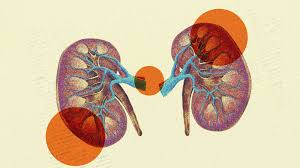Kidney disease means that your kidneys are damaged and unable to filter blood as effectively as they should.
If you have diabetes or high blood pressure, you’re more likely to develop kidney disease. If you have renal failure, dialysis or a kidney transplant are two options for therapy.
What are the most common reasons for kidney disease?
Chronic renal disease is most commonly caused by diabetes and high blood pressure (CKD).
A patient’s medical history is reviewed, and necessary tests are carried out to determine the extent of the patient’s kidney disease. The type of treatment the patient receives is determined by the aetiology of the patients’ kidney disease.
Chronic kidney disease or CKD is a progressive condition that reduces kidney function (basically its ability to filter waste from the blood). Chronic kidney disease often has no symptoms in its early stages and can go undetected in most people until it is in its advanced stages.
In this late or advanced stage of CKD, an individual can develop kidney failure and require dialysis or a kidney transplant to maintain life; at this stage, a CKD patient can lose up to 85-90% of their kidney function; not enough to keep the person alive, without medical intervention.
Chronic kidney disease is also known as end-stage kidney disease (ESKD) or end-stage renal disease (ESRD). Without the kidneys playing their vital role, substances that should otherwise be filtered rather builds up in the body. The patient falls severely ill; this is also when symptoms become glaring.
What are some of the most prevalent signs of kidney disease?
People notice signs like being weary, having less energy, or having difficulty concentrating. Patients may have sleeping difficulties, their skin gets dry and itchy, and the patient may need to urinate more frequently. Sometimes, a patient’s urine may contain blood, or the urine may have a frothy consistency or urine with lots of bubbles.
Puffiness may occur around the eyes and becomes a recurring problem. The feet and ankles are not left out as they get swollen, patients’ muscles become tense, and appetites are lost during the stages.
Dialysis for Kidney treatment
The theory behind dialysis is that it replaces the kidney’s functions by removing waste and excess fluid from the blood. A dialysis session will be necessary At least two or three times a week, for 3-5 hours at a designated dialysis centre.
Dialysis is a medical technique in which a nephrologist temporarily or permanently takes over the function of the kidney by eliminating waste products, poisons, excess electrolytes, and excess water from the circulation.
There are two forms of dialysis: haemodialysis (mostly prevalent) and peritoneal dialysis.
Chronic renal disease is three to four times more frequent in Africa than in industrialized nations. In the South African Registry, hypertension affects around 25% of the adult population and is the cause of chronic kidney failure in 21% of patients on renal replacement therapy. Diabetic nephropathy affects 14% to 16% of South Africans, 23.8% of Zambians, 12.4% of Egyptians, 9% of Sudanese, and 6.1% of Ethiopians. Dialysis treatment rates now range from 70 per million people (pmp) in South Africa to less than 20 pmp in much of Sub-Saharan Africa.
In Africa, the transplant rate is at an average of 4 pmp, with a high of 9.2 pmp in South Africa. The objective for Sub-Saharan Africa should be to have a limited chronic dialysis program with as little time on dialysis as feasible, as well as to expand the availability of transplantation (both live and cadaver) and promote preventative techniques at all levels of health care. Kidney disease screening in high-risk groups.
Ways to prevent kidney disease
Lose weight if you are overweight.
Quit smoking.
Getting a medical checkup.
Take medications as directed.
Keep your blood pressure below 140/90, or ask your doctor what the best blood pressure target is for you.
If you have diabetes, stay in your target blood sugar range as much as possible.








